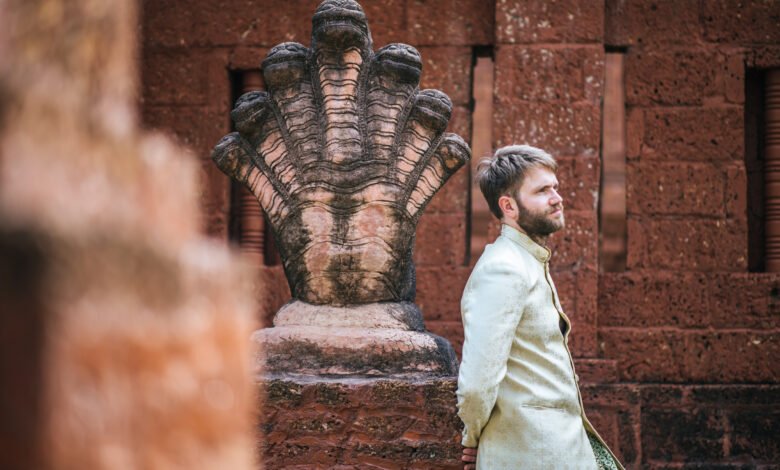Erakunta – Unveiling the Mystical Charm of Telangana’s Hidden Wonder

Tucked away in the rugged landscapes of Telangana, Erakunta emerges as one of the state’s best-kept secrets, offering visitors a rare blend of natural splendor and historical intrigue. This quaint village, surrounded by dramatic rock formations and lush greenery, serves as a perfect escape from urban chaos while providing glimpses into ancient civilizations that once thrived in the region. What makes Erakunta truly special is its untouched beauty – from prehistoric cave paintings to breathtaking sunset viewpoints, every corner tells a story waiting to be discovered. Whether you’re an archaeology enthusiast, nature photographer, or simply someone seeking solitude amidst raw wilderness, Erakunta promises an unforgettable journey through time and terrain.
Headings and Their Explanations
Geological Marvels: The Stone Wonderland of Erakunta
Erakunta’s landscape appears like a giant’s playground with massive boulders precariously balanced over one another creating natural arches and mushroom-shaped formations sculpted by millennia of wind and water erosion. These geological wonders aren’t just visual spectacles but also serve as natural shelters that have protected travelers and hermits for centuries. The area’s unique topography includes hidden water cisterns that collect rainwater in rock depressions, sustaining local wildlife during arid summers. Geologists particularly admire the exposed granite formations that reveal fascinating patterns of mineral crystallization, making it an open-air classroom for earth science enthusiasts.
Ancient Whispers: Prehistoric Rock Art and Megalithic Mysteries
Scattered across Erakunta’s rocky canvas are extraordinary remnants of prehistoric life – vibrant ochre paintings depicting hunting scenes, ritual dances, and mysterious geometric patterns that archaeologists date back to the Neolithic period. These ancient artworks, remarkably preserved under rocky overhangs, provide crucial insights into early human settlement patterns in the Deccan plateau. Nearby, one can find mysterious stone circles and dolmens (megalithic burial sites) arranged with astronomical precision, suggesting advanced knowledge among Iron Age communities. Local folklore speaks of these sites being portals to other worlds, adding layers of cultural significance to these archaeological treasures.
Biodiversity Hotspot: Flora and Fauna of the Erakunta Wilderness
The scrub forests and rocky outcrops of Erakunta harbor an astonishing variety of life forms adapted to this harsh yet beautiful ecosystem. Botanists have documented over 120 plant species including rare medicinal herbs like Patala garuda (Snakevine) and the striking Erakunta lily that blooms spectacularly after monsoon showers. The area serves as crucial habitat for the endangered Indian fox, honey badgers, and over 60 bird species including migratory falcons that use the high cliffs as nesting sites. Conservationists particularly value the region’s population of rock agamas – colorful lizards that have evolved perfect camouflage against the granite boulders, becoming living jewels of this rugged landscape.
Living Heritage: Tribal Communities and Traditional Knowledge
The Lambadi and Chenchu tribal communities have called Erakunta home for generations, maintaining a harmonious relationship with the challenging terrain. Their thatched huts with intricate bamboo latticework blend seamlessly into the rocky backdrop, while their traditional knowledge of herbal medicine and weather prediction remains invaluable. Visitors can witness extraordinary craft traditions like the Lambadi embroidery featuring mirror work that mimics the sparkle of Erakunta’s quartz-rich rocks. These communities celebrate unique festivals like the Bhumi Panduga (Earth Festival) where they perform ritual dances to honor the sacred geography, offering anthropologists fascinating studies in cultural adaptation to extreme environments.
Adventure and Responsible Tourism Initiatives
For thrill-seekers, Erakunta offers exceptional bouldering opportunities across its grippy granite surfaces, with routes suitable for both beginners and expert climbers. Several local organizations now conduct guided “Leave No Trace” treks that include visits to hidden caves and sunset viewpoints while educating visitors about conservation. The most magical experience remains overnight camping under the stars, where the absence of light pollution reveals a celestial spectacle unlike anywhere else in Telangana. Community-run homestays provide authentic experiences, where guests can participate in traditional millet farming or learn to cook tribal cuisine using age-old stone grinders and clay pots.
Conclusion
Erakunta stands as a testament to nature’s artistry and humanity’s enduring connection to the land, offering far more than meets the eye. Beyond its photogenic boulders and ancient paintings lies a living landscape where geology, history, and culture intertwine to create a destination unlike any other in Telangana. As this hidden gem gradually gains attention, sustainable tourism practices become crucial to preserve its fragile ecosystems and cultural traditions. For those willing to venture off conventional paths, Erakunta rewards with transformative experiences – whether it’s tracing a finger over 5000-year-old rock art, watching langurs leap across impossible rock formations, or simply sitting quietly as the setting sun sets the entire stone landscape ablaze in golden light. This is not just a place to visit, but to feel, understand, and carry within you forever.
